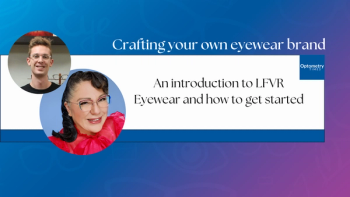
- Vol. 10 No. 04
- Volume 10
- Issue 04
Why it’s important to have a marketing plan
Marketing your practice can seem overwhelming, but with a plan in place you will find that it is much more effective and may even save you money in the long run. Learn how to put a marketing plan together and the benefits of having a marketing plan in place at your practice.
For many, the grind of a day-to-day practice and the responsibilities of being the doctor, procurement officer, human resources specialist, sales trainer, staff trainer, janitor, and so on leave little time for important things like planning and analysis.
Previously, we discussed the need to have a business strategy (
Internal marketing
Marketing is not always about “getting your name out there.” After conducting many years of research and asking the question, “How did you hear about us?” we found that most patients found our practice via their insurance provider and/or word-of-mouth.
Previously from Dr. Spear:
Your marketing goal in the end is to create revenue.
Before you start spending marketing dollars trying to get people in your doors, be sure you have your office ready to provide exceptional service and maximize the revenue of each patient who is already there.
Internal marketing has several advantages:
• It will cost you significantly less than external marketing.
• It will create the word-of-mouth advantage you need-hopefully leading to a 5-star review.
• It will help you to create a true “brand” for your practice. Branding, is the marketing practice of creating a design that identifies and differentiates you.1
Social media marketing
Are the days of “traditional marketing” (radio, print, and television) gone? Not necessarily, but we certainly have more options with social media. Your traditional advertising platforms still exist and can certainly be beneficial, but the best, most cost-efficient marketing platform is social media.
If your practice does not have a presence on social media, you are missing out on thousands of potential patients-at no cost to you. Why is it important to take time to connect your practice to the outside world via social media? Your competition is.
Related:
There are now more than 50 million small businesses using Facebook Pages to connect with their customers and 80% of those indicated that their social media efforts helped increased traffic.2,3 Almost everyone in America is connected via a social media platform. It could be Facebook, Instagram, Twitter, LinkedIn, and so on. It is vital that your practice has a presence with high-quality content.
The rule of thumb for social media posting is that 50 percent should be content from other sources that are relevant to your audience, 30 percent should be content you've created, that's relevant to your audience and 20 percent should be personal, fun content that humanizes your brand to your audience.4 All social posts should include high-quality images or videos to engage your audience.
The formula for social media posts is simple: The more people you have like, share, and comment, the more people will see, follow, and like your page.
Another external marketing platform that we found beneficial is behavioral or search retargeting. This will display your ads based on the users’ Google search queries.
If someone is researching dry eye, the retargeting process will display your dry eye-specific ad on various websites that he visits. This will prompt and remind him that your practice treats dry eye.
Related:
Successful marketing strategies
Some of our best and most successful marketing ideas are those that are non-traditional. Here are some examples:
Health fairs. One way we like to show community support is to participate in community and company health fairs. We provide vision screenings and offer to clean, tighten, and adjust glasses and replace nose pads.
We also make sure to have promotional items, such as cleaning cloths and cleaner with our logo, pens, and hand sanitizer. We use a health fair checklist to stay organized.
Seminars. We conduct in-office marketing on subjects like age-related macular degeneration, dry eye, low vision, cataract, and LASIK. These are easy ways to let patients learn more about their conditions and
We use Solutionreach to target patients of a specific demographic or who are known to have a condition. We then send emails alerting them of the upcoming event. We also send a postcard mass-mailing to target ZIP codes and demographics.
Budgeting
Our practice’s marketing budget is planned at 2 percent, but for most private practices it is recommended to be in the 3 to 5 percent range of your overall gross collections.5 You should also set a limit for your sponsorships.
The easiest way to monitor marketing overspending is to create a marketing dollar amount for each month and choose the marketing initiatives that represent your practice. Donate a designer sunglass to a silent auction, support your local sports teams, but be sure your practice is being displayed and marketed properly.
Related:
Define your story
These marketing ideas are what work best for our practices, but every practice is different. Before coming up with a marketing plan, define your practice’s story.
Every practice has a story. Find your story, create a marketing plan, and get your practice’s name out there.
References
1. Entrepreneur staff. Branding. Entrepreneur. Available at:
2. Sandberg S. There are now more than 50 million small businesses using Facebook Pages to connect with their customers. Facebook. December 8, 2015. Available at:
3. Zarrella D. Science of Email 2014. Hubspot. 2014. Available at:
4. Byrom M. Explained: The 5:3:2 Rule for Social Media. Business.com. 2017 Feb. Available at:
5. Beesley C. How to Set a Marketing Budget that Fits your Business Goals and Provides a High Return on Investment. U.S. Small Business Administration. 2012. Jun. Available at:
Articles in this issue
over 7 years ago
Selling glasses online may not be answer for ODsover 7 years ago
Optometry must change with the timesover 7 years ago
Optic disc swelling early sign of cat-scratch neruoretinitisover 7 years ago
Stop, say hello, and shake my handover 7 years ago
Viola Kanevsky, OD: Owner of Acuity, NYCalmost 8 years ago
5 features of successful comanagementNewsletter
Want more insights like this? Subscribe to Optometry Times and get clinical pearls and practice tips delivered straight to your inbox.


















































.png)


